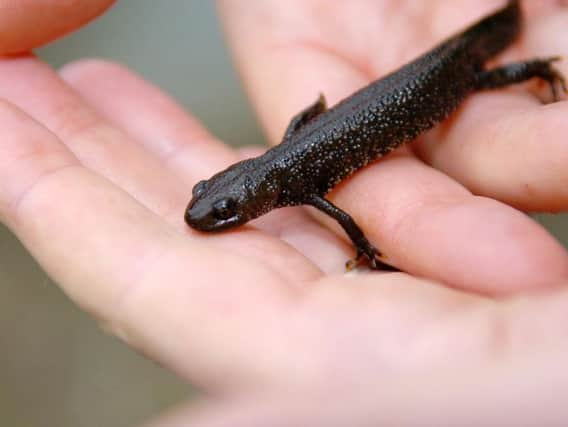Harrogate district housing 'undermines' great crested newts


Among a list of concerns raised but dismissed when Harrogate Borough Council’s planning committee decided to approve a 175-home development on the edge of Knaresborough by Gladman Developments Ltd was approved earlier this month, the fate of the Triurus cristatus did not figure highly.
But Harrogate Trust for Wildlife Protection says that the decision would undermine the health of the newts.Honorary secretary John Barker said: “It cannot be known for certain whether the population of newts will in the fullness of time, be completely wiped out but it is blatantly obvious from scientific research, that the planning permission will continue to drive down their numbers on the site.”
Advertisement
Hide AdAdvertisement
Hide AdEven though neither ecologists for the developers nor Natural England, the government body in charge of protecting wildlife, offered objections to the new houses at Bar Lane, campaigners argue that does not prove that putting 175 houses in the middle of the habitat, will not have repercussions on wildlife.
The group says the danger comes from the current landowner being given permission to create a new pumping system to continually remove surface water away from the 175 houses.
In 1996 a sand gravel company was found guilty of damaging the habitat and crushing newts in its water pumping operations.
John Barker said: “During two recent public inquiries about an adjacent site, we raised very basic questions which were not answered. For example, will the number of newts killed every year in drains and other ways be more than the young produced every year from existing ponds and any others added?”
Advertisement
Hide AdAdvertisement
Hide AdThe Harrogate Trust for Wildlife Protection has taken a keen interest in the welfare of the great crested newts, since they were first discovered 30 years ago in a working quarry between Bar Lane and Hazleheads Lane.
The great crested newt, typically 15 cm in length with dark skin and a rough, ‘warty’ appearance, has been around for nearly 40 million years in the UK.Though classified as an endangered species under European law, it remains fairly common in England, though its numbers are in decline.
One consequence of Brexit is expected to be the end of the situation where, if there is a pond on a building site, it is illegal to send the bulldozers in until experts have confirmed that there are no great crested newts.
Government ministers are on the record as being keen to axe rights afforded to the newts by European legislation in a bid to speed up development projects in the UK, labelling it “excessive” protection.
Advertisement
Hide AdAdvertisement
Hide AdJohn Barker, who has been the charity’s honorary secretary since 1983, said he will be writing to the chief executive of the government’s Planning Inspectorate, alleging that it has been failing in its legal duties to protect wildlife from harmful planning applications.